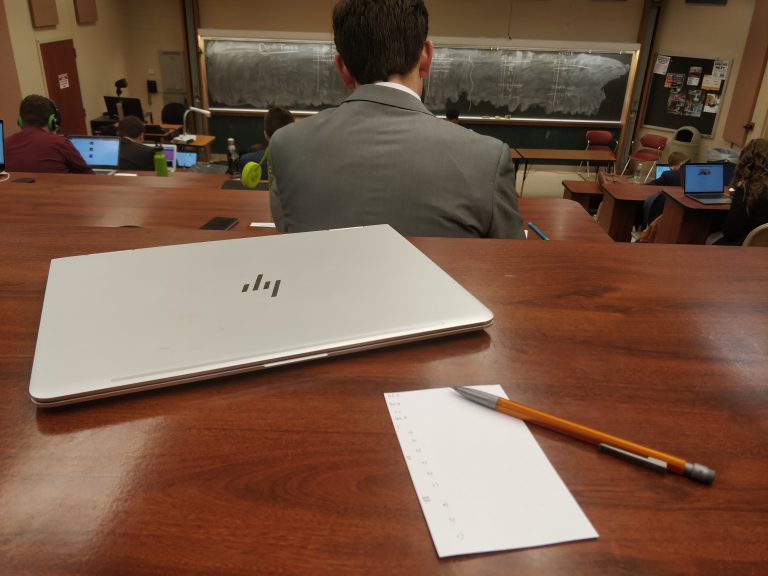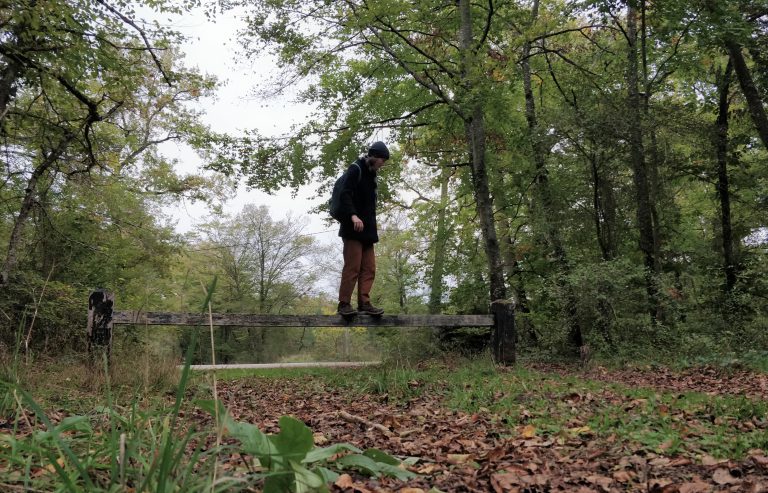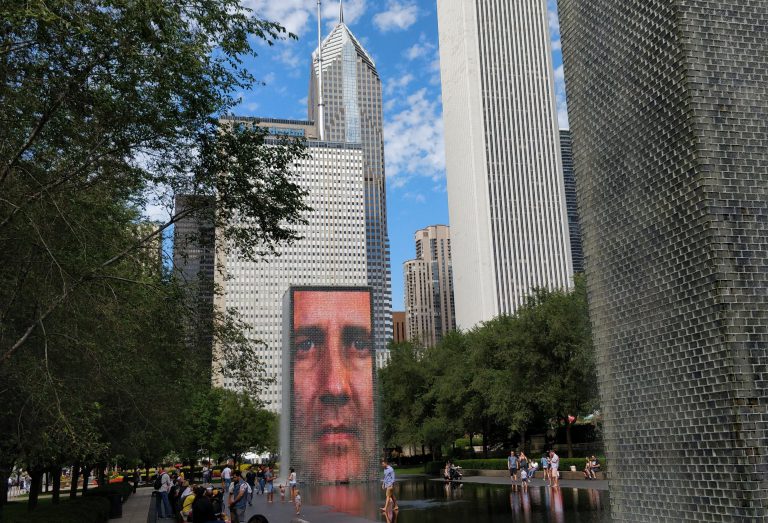Imagine living in a paper box. It’s one story high and some paper walls separating your kitchen from your living room. The design is original, a plastic floor that every visitor mistakes for real wood, clean white walls with the favorite pictures of your German ancestors and a simple roof that protects you from the rain. Placed on a wide green lawn your box is surrounded by many other paper houses, all pretty much alike. Life’s good in your box, there’s little to fear apart from hurricanes that would sweep it away like, well, paper. Even during cold winters, you’re all warm and cozy – God bless the gas heating!
In real life, I’ve not yet observed a paper house. The concept is quite popular in the United States though. I even want to claim that metaphorically, it’s an important part of this country’s culture. Before going into that, I want to talk about literal paper facades though.
When arriving in Chicago, I decided I needed a bike and it had to be cheap. So, I went on craigslist.com and looked up the best 50$ bicycle I could find in the area. It was located in a suburb called Oak Brook, almost unreachable by public transport. Arriving at the place, I was warmly welcomed and invited to have a look inside the house: A one-story building with fragile walls and German ancestors hanging on every wall. I couldn’t stop thinking of this building as a box, built in such a simple way, it could be made of paper. Having collected the cash from me, my bike vendor left with his pickup truck, leaving me behind in a neighborhood where all homes resembled one another.
Building this way is a common practice in the US. When hurricanes are on the news back home, Austrians see pictures of fragile boxes, sometimes flooded, sometimes without walls. When driving the highway in Indiana, the curious tourist observes container-like homes every few miles between vast forests. When exploring the suburbs of any American city, the European eye sees paper homes all around the place. Often built of wood and colored with paint that chips off after a few years, these buildings don’t give a very sustainable impression.
Europeans like bricks
When someone reports building a house in Austria, I think of bricks. I imagine thick walls, with multiple layers of insulation, all covered by primer and waterproof white wall paint. In that respect, our culture is very sustainable. People build houses for eternity. This might be a declining trend, but no one would ever put a wood box on a field and call it their home.
From this perspective, Europeans are materialists that keep their material. People make purchases to last for a long time: Swiss jackets are expensive, but you can wear them for many years. If you build a house, you live there until your children inherit it from you. It’s part of our conservative mindset: Keeping our homes, traditions and swiss jackets as long as possible. Even friendships and the social environment are an example: On average, people change communities rarely and stick with their small circle of friends from high school until their hair turns grey.
As so often, I’m exaggerating here in order to illustrate a contrast:
Paper economy
The free market loves paper. Once it’s used, people must buy new sheets. Trees grow by themselves and places like Indiana are full of them. Cheaply produced and sold at a reasonable price in an age where demand for paper is still high.
The United States of America is built on its free market. Politics have shaped a liberal economy where companies maximize their profit much more flexibly than their strongly taxed European counterparts ever could. Not just businesses but also citizens have internalized this liberal mindset. It’s a far more temporary attitude towards objects and life in general than the European brick culture.
When I was in the US in 2013, it was not paper but fabric that made me realize something was different across the Atlantic. Shopping in “Forever 21”, I decided to buy a single grey T-shirt for four dollars. At the cashier, I had to wait for at least five minutes because the lady in front of me had decided to renew the whole fashion collection in her closed, buying at least 30 pieces of clothing. When it was finally my turn, the surprised retail assistant asked me whether I was sure this one shirt was everything I wanted.
My perception is that US citizens not only buy clothes more often but move into new homes more often, have more weekend houses, purchase more merchandise and eat more often from plastic plates. The last example even exists in dining halls: On campus, when for some reason dishwashers are not fast enough, students must cut their meat with plastic knives and enjoy their salad in a paper bowl. It’s simply not a priority to always provide reusable, long-lasting plates.
In fact, lacking state regulations encourage the use of plastic cups and the construction of badly isolated houses. Low sales tax, high salaries in the right jobs and fierce free-market competition enables a culture of consumption and waste.
Paper beauty
While a paper box would be laughed at in Europe, people here seem to think it’s pretty. The definition of beauty is known to strongly vary between countries. What I call paper culture is what I experience as one of the biggest differences in aesthetics between here and back home. People love their wood villas that don’t really need insulation due to an effective AC. They consider it pretty to wear new clothes every year. Plastic cutlery is not considered a sign of poor taste as it is in Europe.
Probably my favorite example of paper culture is food. The restaurant market in the US is dominated by fast-food chains of all different kinds. Meals they serve contain a lot of what humans crave the most: Fat, sugar, and salt. On a superficial level and for a short period of time these meals make us happy, just like the new shirt from Forever 21 does. It’s a façade that starts crumbling after having taken the last bite of our burger when our belly starts to hurt. Still, many Americans have accepted this food as the Status Quo of “what to eat when out of town”. At a Volleyball tournament last weekend, we had McDonald’s for breakfast, ordered sandwiches for lunch and ate Asian fast-food for dinner. Even at a conference where I was in October, we had bagels with peanut butter for breakfast and Subway for lunch. Whatever the event, people have simply accepted eating food which is dissatisfying in the long run but enjoyable when biting into it.
American aesthetics are more short-lived and emphasizes momentarily pleasure. At least that’s the impression I get when eating at Wendy’s or when driving through Chicago’s suburbs.
Paper still comes from trees
Being aware of climate change and the heavy burden unnecessary waste puts on the environment, I’m not in favor of paper culture. Consumers are powerful and if they all believe that plastic forks are a feature of their next party, landfills will fill up rapidly. In order to save our planet, we need to build on sustainability rather than extensive consumption.
However, I don’t want this blog post to be a criticism of American culture. I simply want to share an intercultural experience. When being a guest in a new country, I believe, we should try to remain curious rather than judgemental.







